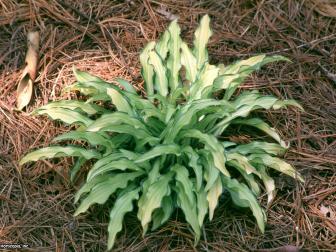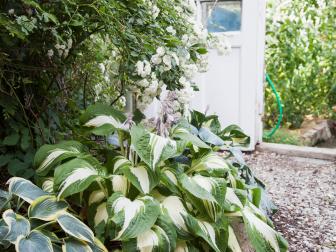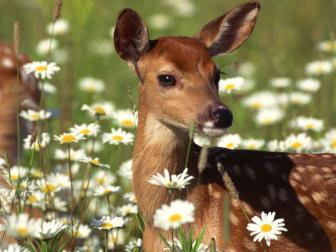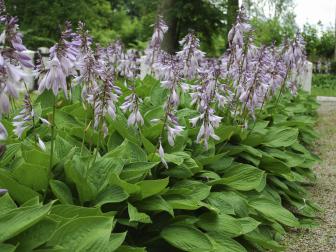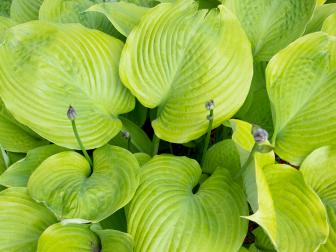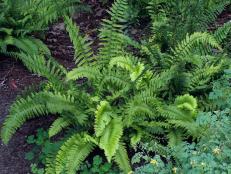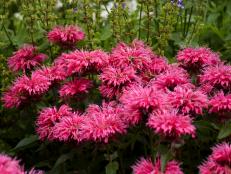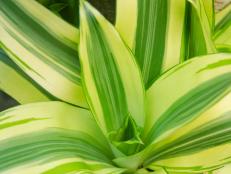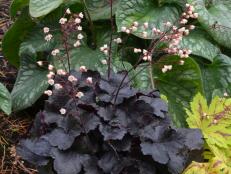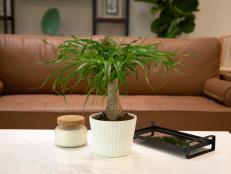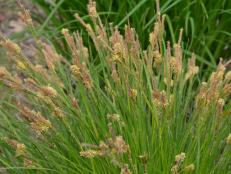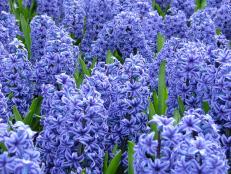Hostas: How to Plant, Grow and Care for Hostas
Learn why easy-growing hostas are one of the most popular perennials.

Got a shady corner you want to brighten? Count on hosta plants to fill shady spots with leafy textures and colors that pop. Hostas are long-lived perennials with easy-growing personalities. These low-maintenance plants require minimal care to look their best.
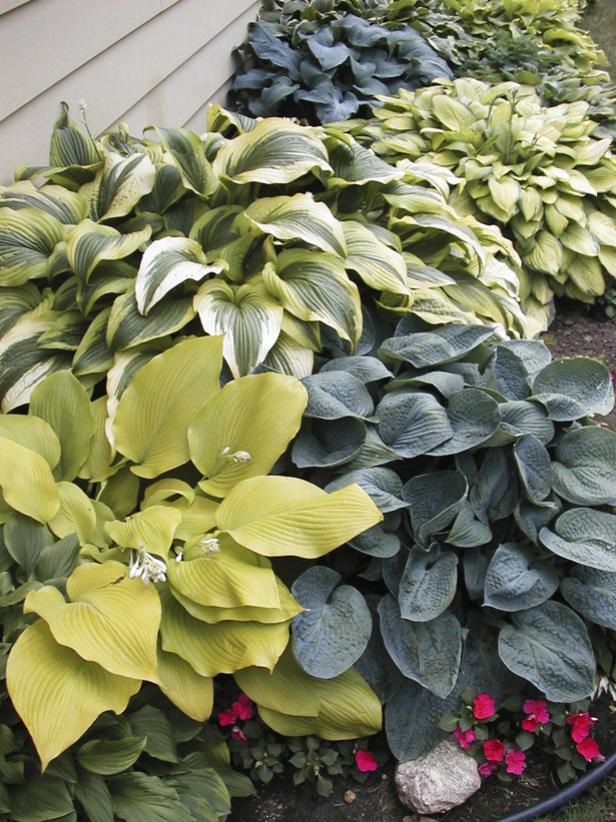
Several varieties of hostas combine to create a landscape in shades of green.
Plant type: Herbaceous perennial
Hardiness: USDA Zones 3 to 9
Size: Plant range in size from about 2 inches to 60 inches tall and about as wide, depending on selection.
Culture: Prefers partial to full shade; sun-tolerant cultivars are available.
Types of Hosta
Like Ireland, where the landscape is said to grow in “forty shades of green,” hostas come in many different colors of green, too, from emerald to chartreuse, blue-green to avocado, and artichoke to olive. Not all hostas are green, though. Some lean toward butter-yellow or gold, powder blue, cream or white. Others are variegated or bordered or striped in various hues.
Leaf textures, shapes and sizes also vary from plant to plant, making it possible — and fun — to collect dozens of different species or selections. Look for leaf surfaces that are crinkled, smooth, wavy, puckered or concave.
The leaves themselves can be heart-shaped or elongated, oval or rounded. In general, hosta leaves grow symmetrically, forming mounds of foliage that can range from just 3 inches high, for dwarf varieties, to 5 feet tall, for giant types.
Care for Hostas
Hostas originally come from China, Japan and the islands of South Korea. These outstanding foliage plants grow best in rich, well-drained soils.
Most hostas need shade, but some will take sun, so read plant labels and choose varieties that like the growing conditions you can offer. In general, blue hostas have richer color in shady spots, while gold ones need more sun to show their brightest hues.
The majority of these undemanding plants grow in average soils and are hardy in Zones 3 to 9. Hostas need average water, but most benefit from watering during dry spells. Also water more often if they’re planted underneath trees that may compete for water and nutrients.
Be careful not to overwater, which can cause the plants to rot. Suspect crown rot if you see yellow foliage and stunted growth.
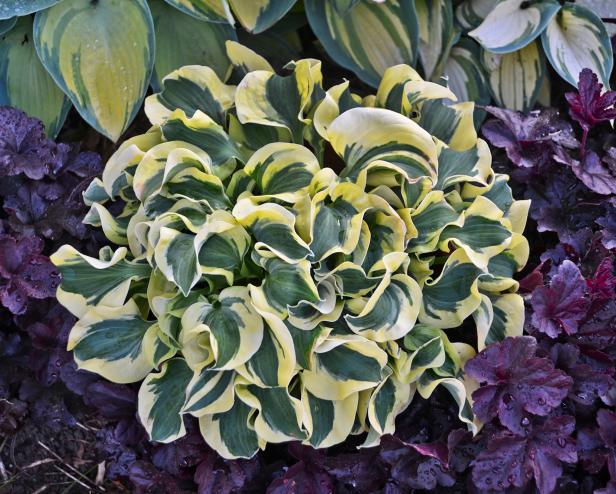
Proven Winners
Hosta 'Mini Skirt'
How to Plant Hostas
Spring is the best time to plant, transplant and divide hostas, when leaves are beginning to emerge.
To plant, dig a hole as deep as the root ball and at least twice as wide as the diameter. Space your hostas out as required by their spread at maturity. You won't go wrong adding organic matter to planting holes for hostas. Work in composted leaves, composted manure or whatever type of local compost you can get your hands on. Compost helps improve soil nutrition and moisture in a way that hostas love.
Add some mulch to help hold moisture in the soil and keep down weeds; once hostas become established, they usually crowd out competing grass and weeds.
Transplanting and Dividing
Hostas are easy to transplant either from divisions or directly from nursery pots (see full directions here). To dig a hosta for transplanting, if you're working in early spring, simply dig as much of the rootball as possible. Splitting hostas is best done in spring or early fall. Ideally, plan on dividing hostas before spring or fall rains arrive.
Transplanting Hostas
Glean some tips and tricks for making more of your favorite hosta plant.
Hostas don’t typically need dividing unless they have outgrown a space. In most cases, even when a hosta has filled it growing area, the resulting root restriction doesn’t damage the plant but simply reduces the growth rate.
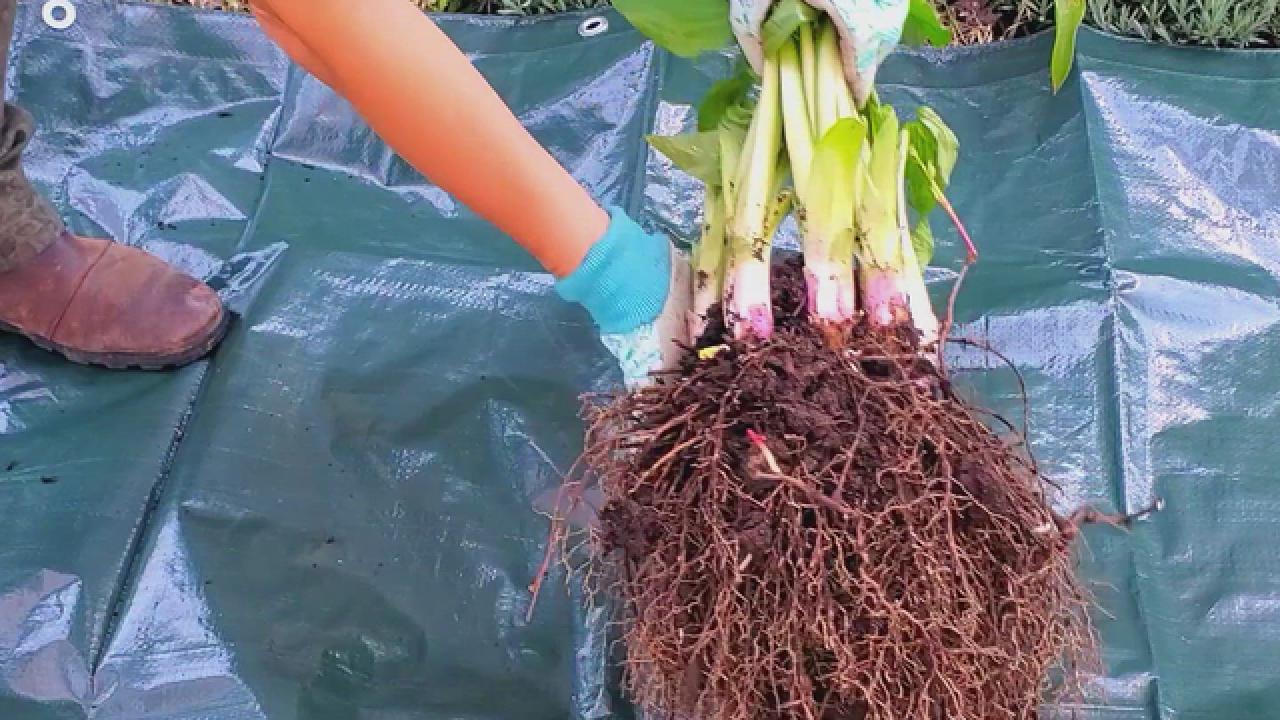
Growing Hostas in Pots
Many hostas are great container plants. For best results, use a pot with drainage holes, or drill some in the bottom. Fill the pot with potting soil mixed with slow-release fertilizer.
Take your hosta out of the nursery pot and gently loosen the root ball. Put it in its new container and add some soil, burying it no deeper than it was in its original pot. Water thoroughly and make sure any excess drains away.
Container-grown plants often dry out faster than those in the garden, so water again as needed, especially in hot weather.
Using Hostas in Your Garden
During the course of the growing season, expect to see flower stems appear on your hostas. These stems support a spike of white to lavender blooms. The flowers beckon bees, butterflies and hummingbirds to the garden. The long stems look beautiful added to garden bouquets.
Use hostas along a border or as a specimen plant in a shade or woodland garden. You can combine with other shade-loving plants, such as ferns, bleeding heart or epimedium, or use it as an accent by itself.
22 Lush Plants for Your Shade Garden 22 Photos
Hostas are among our favorite shade-loving plant picks.
Shade Plants for Woodland Gardens 12 Photos
Grow a lush, woodland garden with this selection of shade-loving plants.
If you're primarily growing your hostas for the leaf color they bring to the landscape, you might want to clip flower stems as they form. This creates a consistent look in your hosta plants, although the blue leaf types typically produce another flowering stalk if deadheaded.
Pest Prevention for Hostas
As much as gardeners like hostas for their steady, reliable beauty, deer like them for their tasty foliage. Rabbits also find hosta leaves, especially the new shoots, particularly irresistible. There are a host of techniques for keeping critters away from hostas — everything from using fabric softener in a spray bottle, to home brews featuring garlic and capsaicin, to rotten egg sprays.
Deter Deer in the Garden
Learn how to keep deer from destroying your landscape and backyard garden.
What works for one gardener may not work for your backyard's herd of deer, although most folks report consistent success with dried blood repellents and plastic bird netting tossed loosely over plants.
Slugs and snails also wreak havoc on hostas, and there are plenty of tips for dealing with these pests as well. Try pet-safe slug baits, pine straw mulch and various traps to keep slugs and snails in check. It's also worthwhile to learn when these slimy munchers reproduce. For many snails and slugs, fall is egg-laying time. Eggs hatch and young slugs go into winter hiding. In spring, they appear early and have voracious appetites. Continue to treat for slugs in fall to put a dent in populations.
How to Keep Deer From Eating Hostas
For deer, hosta plants are like candy. Some hostas are marketed as containing a degree of deer resistance, but as with all deer resistant plants, when these critters are hungry enough, they’ll eat anything. So no hosta is truly safe. Your best bet is learning how to keep deer away from hostas.
Before exploring how to keep deer away from hostas, it’s important to learn how to recognize the signs of deer feasting. When a deer devours a hosta, it tears the leaves from stems and lets the stems remain. You wind up with what looks like spiky celery stalks poking up out of a hosta mound.
You may also spot deer hoof prints in soil — they look like an upside down heart. In mulched beds or moist soil, a deer’s foot sinks, so you might see what appear to be deep cylindrical holes. Or you may spy piles of deer droppings, which resemble small black pebbles.
The first step in learning how to keep deer away from hostas is to understand a little about deer behavior. Deer are skittish and become alarmed when things are different than normal. They are amazing jumpers and can leap to great heights (up to 12 feet when scared) and across large distances. They are also afraid of predators, like wolves—or a relative, like your own family pup.
The surest way to keep deer from eating your hosta plants is fencing your yard. Aim for at least an 8-foot fence, but double-check with the local extension office to confirm what kind of deer are in your area and how high they can jump. Many gardeners rely on an electric fence with several strands of wire, while others prefer a heavy plastic mesh. Deer can’t see the mesh but instead run into it, which keeps them unsettled and more prone to avoid an area.
Anything that interrupts the take-off and landing zones can also deter deer because they can’t jump both high and wide. A double fence row is effective at keeping deer out. Simply place an inner fence 3 to 5 feet from the outer one. When you use a double fence, reduce the height to 5 or 6 feet. You can also replace one of the fences with shrubs, stakes or pickets.
Exploit a deer’s skittish nature by rotating repellant sprays. Usually anti-deer sprays are based on formulas using dried blood, garlic, red pepper, rotten eggs—or combinations of these items. You can whip up home brews, or rely on manufactured sprays. The bottom line with sprays is to follow directions carefully, reapply as needed and rotate. Otherwise deer can become used to one particular scent.
Hosta Disease
Few diseases bother hostas, although anthracnose can show up in warm, humid weather. You’ll recognize it by the big, irregular spots with dark borders that form on the leaves; later, the middle of the leaves may look torn. Try to avoid the problem by spacing your plants as recommended and watering with soaker hoses or drip irrigation rather than sprinkling the foliage from overhead. If you use a fungicide, choose one that targets this disease and follow label directions.
Hosta Varieties
This incredible group of perennials features more than 8,000 named cultivars. There's definitely a type of hosta to please every single gardener.
19 Great Hosta Varieties for Your Garden 19 Photos
This shade-loving plant comes in a head-spinning array of hues and sizes.
Hosta varieties cover the gamut in terms of size. Tiny miniature types grow 2 inches tall and 4 to 6 inches wide, and gargantuan hosta varieties reach a mature size of 48 inches across and 60 inches tall.
Small hosta varieties offer an ideal size for planting along walkways, in shady rock gardens or in fairy gardens. To keep small plants from disappearing among full-size counterparts, many gardeners tuck miniature types of hostas into containers. This technique works especially well in mild-winter regions where temperatures aren't cold enough to damage the plants.
Miniature Hostas
The names of miniature hostas usually contain clues that the plants are small, such as 'Baby Booties' (5 inches tall, 19 inches wide), 'Bitsy Gold' (8 inches tall, 21 inches wide) or 'Blue Mouse Ears' (8 inches tall, 12 inches wide). Most nurseries that specialize in selling many hosta varieties usually have lists of miniature types.
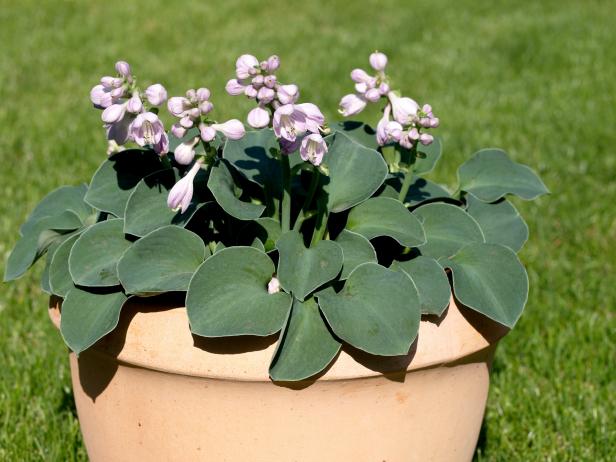
Shutterstock/Bildagentur Zoonar GmbH
Hosta ‘Blue Mouse Ears’
Giant Hostas
Giant hostas also frequently have names that contain clues to the plant's size. A few larger-than-life hostas include 'Bigga Luigi' (25 inches tall, 80 inches wide), 'Big Daddy' (25 inches tall, 66 inches wide), 'Kingsize' (48 inches tall, 84 inches wide) and 'Frost Giant' (28 inches tall, 72 inches wide). One of the most well-known giant hostas is 'Empress Wu', which grows to a hefty 48 inches tall and 60 to 72 inches wide, with individual leaves up to 18 inches across.
Giant hosta varieties can hold their own anywhere in a landscape, but look especially lovely planted beneath mature trees, atop retaining walls or as part of a hosta garden that fills a shady area. Pair large hosta varieties with shrubs and small trees to create plant combinations that are to scale. Or achieve the same effect by planting large and medium hostas side by side. Just be sure to space plants properly to avoid having the large one engulf the smaller.

Image courtesy of Ball Horticultural Company
The 'Empress Wu' hosta grows to a hefty 48 inches tall and 60 to 72 inches wide with individual leaves up to 18 inches across.
Slug-Resistant Hostas
Slug-resistant types of hostas make it possible to grow these leafy perennials with less slug and snail damage. The slug-resistant hostas typically offer leaves that are thicker, blue or have a seersucker texture. The names of classic slug-resistant hostas, like 'Sum and Substance', 'One Man's Treasure' and 'Praying Hands', don't give a clue about their non-appeal to slugs. Others, like 'Alligator Shoes', 'Rhino Hide' and 'Bulletproof', offer names that are more forthcoming in terms of slug resistance.
Other hosta varieties offer outstanding leaf color in shades of blue, gold, chartreuse and variegated patterns. There's even a white leaf hosta, 'White Feather'. It's worth a visit to a garden center or nursery that specializes in hostas if you're considering filling a shady area of your yard with these leafy wonders. You'll discover the vast array of hosta varieties available, including ones that open fragrant flowers.
The Best Hostas to Plant in Sun 23 Photos
Not all hostas are made for the shade. Learn how to grow sun-tolerant hostas successfully, and which varieties do best.
Hostas for Sun
Ideal growing conditions for hostas feature filtered light, or what a plant tag would label "partial shade." But many hostas can adapt to increasing amounts of sun.
Hosta plants that tolerate sun generally have thicker leaves. 'Rhino Hide' hosta, 'Thunderbolt' hosta and 'Liberty' hosta are varieties with thick leaves. The thicker leaves, by the way, also offer greater slug resistance.
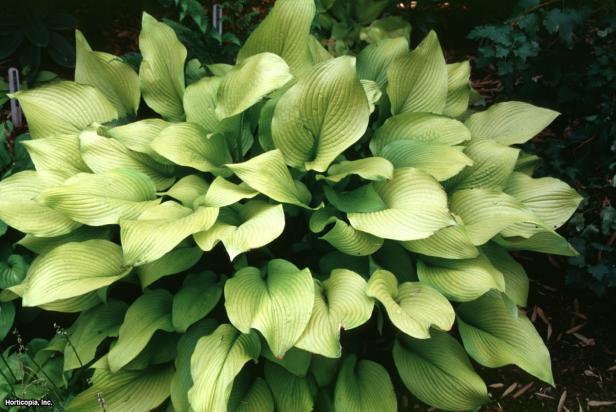
Hosta 'Sun Power'
Hostas that open fragrant flowers can usually withstand a little more sun. These types of hostas include 'Fried Bananas' hosta, 'Garden Delight' hosta and Hosta plantaginea, a native of China with flowers that open and release fragrance at night. Also, hostas that can withstand some sun typically have leaves with hues of white, yellow or gold. The leaves may be solid or have some variegated pattern of these colors. 'Fire and Ice' hosta has bright white leaves with green edges. 'Sun Power' hosta has bright chartreuse leaves that glow in the landscape. 'Sum and Substance' hosta also has chartreuse leaves, which are large (up to 20 inches across) and puckered.
Some of Our Favorite Hosta Varieties
'Patriot' — This long-time favorite has large, oval leaves that look puckered on the surface. White margins surround the deep green foliage. Give it full shade and expect vigorous growth. 'Patriot' is considered a medium-sized hosta and bears lavender blooms in the summer.
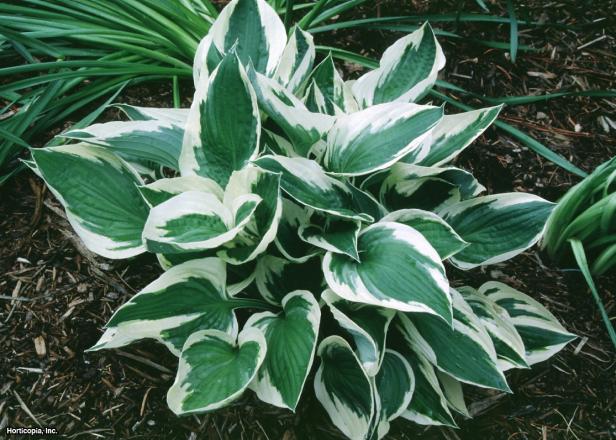
Hosta 'Patriot'
'Sum and Substance' — Use this giant hosta, which averages 30 inches tall and 60 inches across, in beds and borders or as a specimen plant. It prefers full morning sun but takes some shade. The pale lilac-to-white blooms open in late summer on 3-inch-long stems. The leaves may turn gold if these drought-tolerant plants get lots of sun.
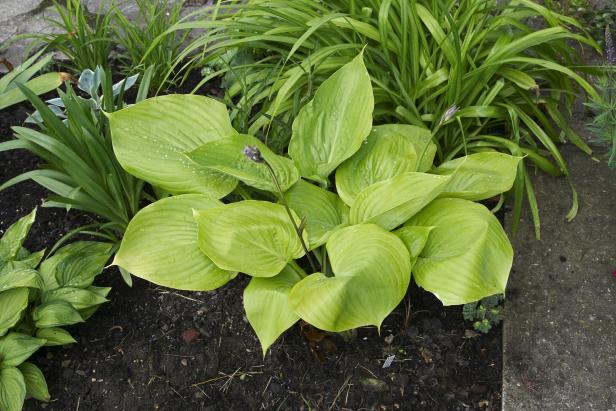
Shutterstock/Del Boy
Hosta ‘Sum and Substance’
'Blue Mouse Ears' — Award-winning 'Blue Mouse Ears' is a diminutive beauty, growing just 8 inches tall and 18 inches wide. The thick leaves look rather rubbery and are an attractive blue-green to gray-green. Give it light to full shade and average water. Its bell-shaped, lavender flowers open in midsummer.
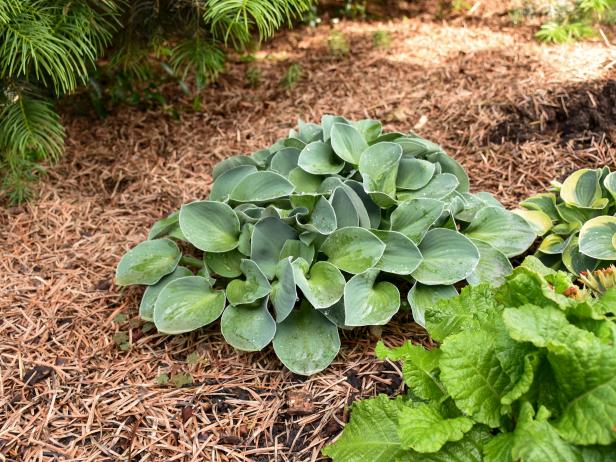
Walters Gardens, Inc.
Hosta ‘Blue Mouse Ears’
'Autumn Frost' — This medium-sized hosta has frosty-blue leaves with bright yellow borders that age to creamy white. The plants grow 10 to 12 inches high and spread to 2 feet in part sun to full shade. Watch for pale lavender flowers in summer.
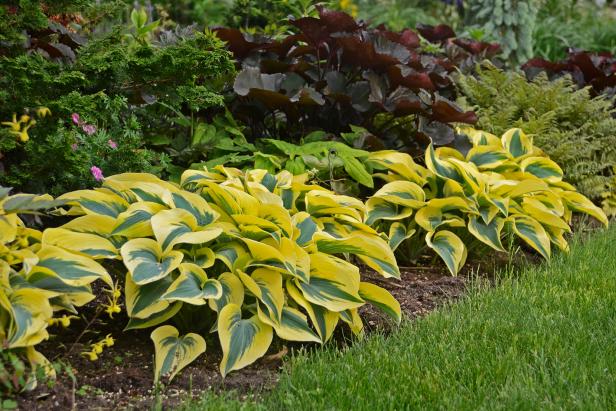
Proven Winners
Hosta ‘Autumn Frost’
'White Feather' — This lovely hosta accents any planting with its distinctive colorless leaves. Keep this pale-leafed perennial in light to full shade for best coloring. "White Feather' grows 6 to 10 inches tall and 9 to 12 inches wide. 'Whie Feather's thin leaf tissue is a beacon to slugs, which love munching on the thin material. Keep a supply of slug bait on hand, and use it liberally.

Image courtesy of Ball Horticultural Company
'White Feather' Hosta
'Earth Angel' — Named Hosta of the Year in 2009 by the American Hosta Growers Association, this pretty plant reaches 30 inches high with a spread of 40 inches. It's hardy in Zones 4 to 7. The big, heart-shaped leaves are blue-green with broad, creamy-white margins. Give 'Earth Angel' part sun to full shade.

Proven Winners
Hosta ‘Earth Angel’
'Francee' — Shade-loving 'Francee' has glossy green leaves with white margins. It likes moist soil and grows about 2 feet high and 4 feet wide. It's a great plant for containers, making a good companion for spring-flowering bulbs and annuals in beds and borders.

Shutterstock/NAPA
Hosta 'Francee'






